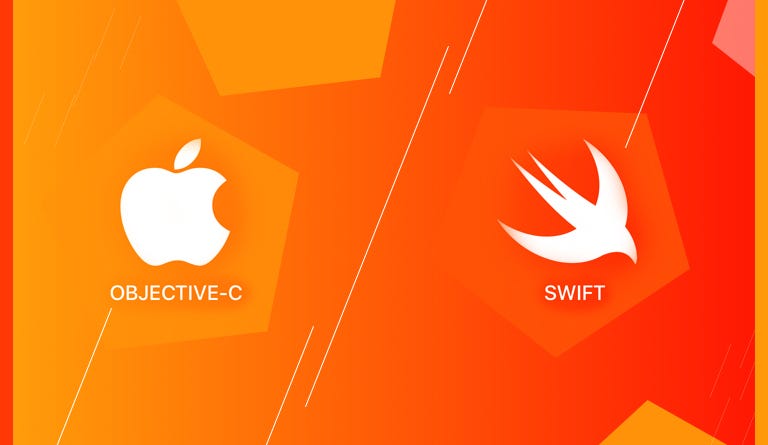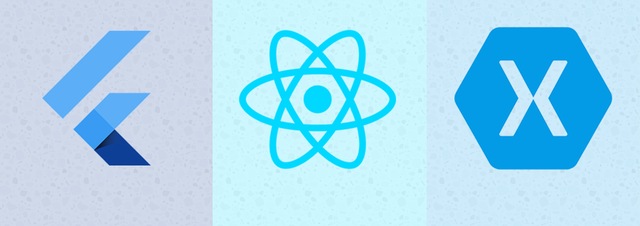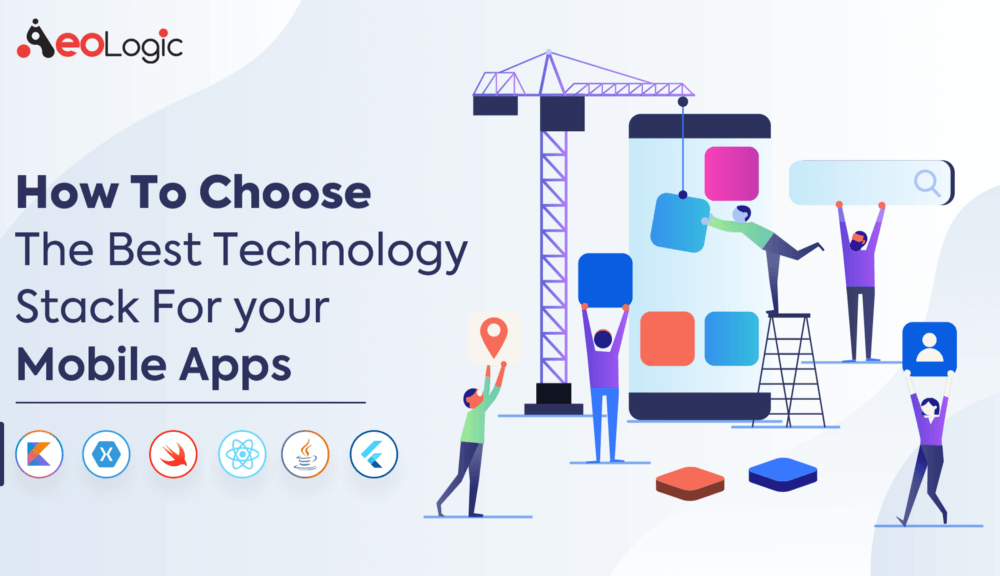So, after a lot of brainstorming and jotting down hundreds of ideas, you have finally decided to build your app. You know everything that the app will do, what goes where, the features & specifications. But did you think about the technology stack for your app? What platform are you going to build your app for? Which technology are you going to use? What framework is going to complement your app specification?
Not yet? It’s okay. By the end of this article, you will have a clearer picture of the type of technology you need specifically for the kind of app you want.
When it comes to mobile app development, choosing the right technology stack is the most crucial part of the entire process. It consequently will serve as a basis for your mobile app functionality, scalability, and maintenance. The world of technology grows 10 folds each year. Especially, the advancement in the mobile app development technologies has provided such scalability and suitability to the developers that today we have around 3 billion apps developed on all the technologies available.
But which one is for you? We’ll find out. But first, let’s get down to the basics.
Highlights of this Article
What is a Mobile Development Technology Stack
Why is it important to find The Best Tech Stack for Your App
Native App Technology Stack
Hybrid App Technology Stack
Cross-Platform App Technology Stack
How to choose the Best Tech Stack for your App
What is a Mobile Development Technology Stack
Simply put, a mobile development technology stack is a blend of software products, programming languages, frameworks, libraries, platforms, tools, and UI/UX solutions employed by your mobile app development team.
Technically, the entire mobile app development technology stack can be divided into 3 areas. These areas also constitute the anatomy of an application. Here are those three components:
Frontend Development — The interface on which the user interacts with the mobile app.
Backend Development — This the part that takes the user input, processes it, and converts it into a favorable output.
Development Platform — This is the place where interfaces and libraries come into the picture as a combination to design and develop the mobile application.
Now that you know what mobile app technology stack really is, let us now look into the reasons why it is important for businesses or even individuals to sit with their partnered mobile app development company and look at the technology stack that would be put into their mobile apps.
Why is it Important to Find The Best Tech Stack for Your App?
There are a bunch of elements that are dependent on the selection of the right tech stack for your mobile app. The probability of whether your app is robust or will it be able to scale to different operating system versions, relies heavily on the technology combination that you choose for its development.
Any wrong or uncalculated decision in the selection of nothing but the best technology stack for mobile applications will affect its current performance and future growth prospects negatively.
While all these are the kind of issues you may face when you are deep inside the process of mobile app development, there are a lot of initial issues that may incur due to poor selection of technology.
Since you now know what technology stack is and why is it important for your app to be built with the best-suited technology stack, let’s explore the commonly used technology stack options:
Native App Technology Stack
Native Mobile apps are known for their robustness and excellent performances. The quality of the app that professional businesses usually look for is the result of Native Mobile App Development.
Native apps offer great device compatibility, seamless user experience, and high security. Not just that, native apps integrate the device’s in-built functionalities without calling for an external third party API.
Talking about native apps, the two most dominant names that pop-up is Android and iOS apps. Both these platforms come with different compatibilities, which of course, calls for different technology stack as well. Let’s take a look at commonly used technology stack for iOS and Android mobile app development:
Android Tech Stack
If you want to focus on the largest share of your target audience and decide to build a native application for Android, pay attention to the following mobile development technologies:
Programming Languages — Kotlin and Java
Javais a seasoned coding language used not only as an app stack for Android, but it is also applied to web development, Big Data, and others. It comes with various open-source libraries and tools to facilitate the implementation for software engineers and shorten your time-to-market.
Even though Kotlin is the official programming language for android app development, java is still used widely by the developers. However, with time, Kotlin has become a lot more stable option for the developers to workaround in the Android studio. The fact that the language is clean, lightweight, and much less verbose is making it a solution to all the Java problems.

Development Tool s— Android Studio
Android studio is a development tool that gives developers the feasibility to edit code, debug, and provides an instant deployment system. The platform focuses entirely on creating high quality android mobile applications. Along with that, it allows developers to use multiple on-device debugging tools, emulators, graphical UI builder, and a completely scriptable test automation support.
iOS App Technology Stack
If you want to create a native application for iOS, you should consider the following mobile app technology stack:
Programming Languages — Swift and Objective-C
The most preferred languages that find themselves being a part of the iOS mobile app development technologies are Swift and Objective-C. But Swift is more preferred and suggested programming language, simply because this language is a lot more functional and offers codes which are a lot less error-prone. It also consists of dynamic libraries that are uploaded directly to memory, cutting down the initial app size and increasing its performance.

Development Tools — Xcode and AppCode
If you choose Swift for your iOS app, then you’ll need Apple Xcode as the toolkit for developing your native app. This full-featured development environment lets you create mobile apps as well as desktop applications. Xcode comes with integrated support for Git repositories, a graphical editor to build user interfaces, instrumentation and debugging tools, and integrated documentation. Whereas, AppCode is an alternative to Xcode that has started to become popular. The faster coding and various language support offer C, C++, and JavaScripts.
Hybrid App Technology Stack
Hybrid apps are usually developed with the help of the standard web techniques like CSS, HTML5, and JavaScript. Hybrid apps usually consist of two sections — Backend and Native shell. These apps run on all platforms while providing access to API and acquiring device storage and camera.
Some of the famous Hybrid App frameworks that are most commonly used for the development include — Cordova, Sencha Touch 2, and Ionic.
Cross-Platform App Technology Stack
Where Native apps are the ones that are made especially for one platform either Android or iOS then there are Cross-platform Apps that are developed to run on both the platforms in one go.
Cross-platform app development means using one code to develop/build the app that would run on different platforms — Android, iOS, Web.
Most businesses go for cross-platform app development simply because of the fact that they are able to operate around greater demographics. All the while taking advantage of the low development cost and faster go to market time.
[Speaking of cost, know how much does it cost to develop a mobile app]
Some of the best cross-platform frameworks are Flutter, React Native, and Xamarin.
Especially Flutter, one of the best cross-platform frameworks we have ever come across. It’s been more than 10 years of building mobile apps using most of the frameworks and technologies available, nothing compares to Flutter. We highly recommend choosing Flutter, for your mobile app.

How to choose the Best Tech Stack for your App
You have a rich choice of technology stacks for mobile applications, but which one is right for you to use in your app development project? It’s important to have a solid plan in mind when choosing a mobile app stack if you want to have not only professional, functional software but something more like maintainability, scalability, and security. There are a lot of things to consider when trying to choose the right mobile application technology. Let’s go through each in detail:
Project Type
This is a vital determinant when choosing a mobile development technology stack for your mobile application. For example, if you’re planning to create a complex mobile app with great performance and a completely custom, platform-specific UI implementation, and doesn’t have a budget constraint then you should go native. In such cases, Kotlin or Swift are the commonly used programming languages.
The Goal of the App
The selection of the technology stack also depends on what the mobile app is majorly aiming at, what is the goal that you want to achieve with this app.
Furthermore, there would be a stark difference in the mobile app technology stack choice when you are looking to develop a high latency app vs a quick response, low latency mobile app. A mobile app that is dependent on heavy load processing calls for a much robust tech stack than the ones that operate around streamlined interactions.
Budget
It goes without saying that money is the core driver for any business. Often companies can’t afford to invest in concurrent development of iOS and Android apps, especially if we are talking about idea validation. In such scenarios, you can choose to go for cross-platform mobile app development, which will make apps for both Android and iOS at the cost of developing one. We will recommend choosing Flutter over other cross-platform frameworks because of its support backed by Google and unbeatable proven performance.
[Learn how to create a mobile app in Flutter]
Long-term strategy
Scalability and stability refer to the ability of your software to manage growth outbreaks and seasonal spurts. These are the key metrics that can either rise or sink your business because, in today’s competitive environment, users become less loyal.
As the number of consumers increases and the company matures, your application should be able to handle this growth and adapt to your needs, allowing both horizontal and vertical scaling. Post-release maintenance should be done regularly to guarantee seamless performance and prevent customer churns.
Wrapping Up
Mobile app development will continue to grow as more and more enterprises adopt mobile technologies. If you want to create a highly functional mobile app, choosing the right mobile app technology is the key ingredient.
With this, you now know everything about the technology stack that you need to get started with your first mobile app development project. Now no matter which technology you end up using, make sure that they work well with your present app structure and prepares your mobile app to be innovative and scalable.
Do you also have an amazing app idea that can change the world? we’d love to hear it.
Feel free to connect with us:
At Aeologic Technologies, We combine our market research expertise across an array of technologies that help in building a better future. We’ve been carrying out qualitative and quantitative research projects for our clients for several years, establishing ourselves as the gold standard in reliable technical research.
For the last 10+ years, we have been developing apps from a wide range of areas. Hire a developer for your mobile app project on an hourly or full-time basis as per your requirement! You can connect with us on Facebook, Twitter, and LinkedIn for any queries.
Enable enterprise-grade innovation by collaborating with a mobile application development company Noida focused on delivering secure, scalable, and future-ready mobile application ecosystems.

Manoj Kumar is a seasoned Digital Marketing Manager and passionate Tech Blogger with deep expertise in SEO, AI trends, and emerging digital technologies. He writes about innovative solutions that drive growth and transformation across industry.
Featured on – YOURSTORY | TECHSLING | ELEARNINGINDUSTRY | DATASCIENCECENTRAL | TIMESOFINDIA | MEDIUM | DATAFLOQ






